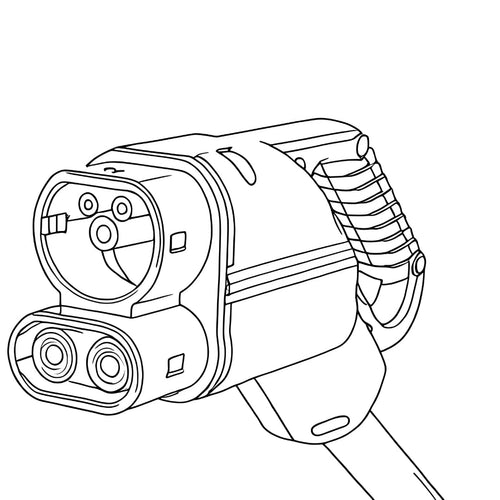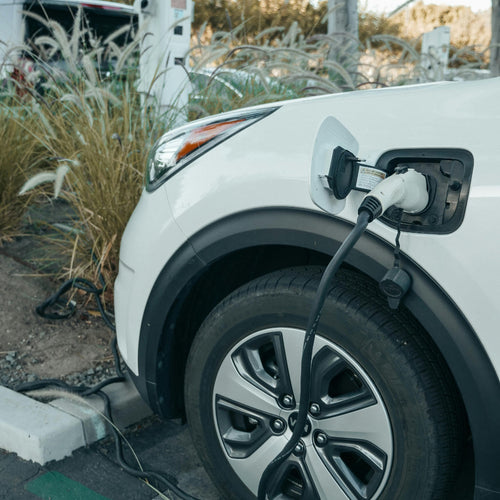Among the most commonly discussed DC fast charging standards are NACS (North American Charging Standard) and CCS (Combined Charging System). Each offers distinct features, benefits, and drawbacks. This article dives into the key differences to help you understand which one might suit your needs best.
NACS (North American Charging Standard)
NACS is a proprietary charging standard introduced by Tesla. It is known for its sleek design and high efficiency. It has become synonymous with Tesla’s robust Supercharger network, offering a seamless charging experience for Tesla owners.

NACS
Key Features of NACS:
Compact and Lightweight Design: Easy to handle and aesthetically appealing.
Dual Charging Capability: Supports both AC and DC fast charging.
Optimized for Tesla: Delivers top performance when paired with Tesla vehicles.
Exclusive Network Access: Tesla’s extensive Supercharger network uses the NACS connector.
NACS Pros
Blazing-Fast Charging: NACS connectors offer some of the industry’s quickest charging speeds.
Tesla Supercharger Network: Unmatched reliability and coverage for Tesla owners.
Compact Design: User-friendly and ergonomic.
Optimized Performance: Works seamlessly with Tesla vehicles.
NACS Cons
Limited Compatibility: Only Tesla vehicles and those with adapters can use NACS chargers.
Restricted Access: Non-Tesla EVs have limited or no access to Tesla’s charging network.
Proprietary Nature: Exclusivity limits interoperability with other EV brands.
CCS (Combined Charging System)
CCS is an open charging standard embraced by many automakers worldwide. Its versatile design makes it compatible with a variety of EV models and charging networks.

CCS
Key Features of CCS:
All-in-One Connector: Combines AC and DC charging in a single plug.
Global Standard: Widely accepted by automakers and charging providers.
Flexible Use: Supports a broader range of EV brands.
Third-Party Network Support: Accessible through numerous public charging networks.
CCS Pros
Universal Acceptance: Supported by nearly all non-Tesla EV manufacturers.
Dual Compatibility: Combines AC and DC charging in one connector.
Global Reach: Widely recognized and used internationally.
Evolving Technology: Regular updates improve charging speeds and compatibility.
CCS Cons
Bulky Connector: Less sleek compared to NACS.
Variable Network Quality: Public chargers may lack the consistency of Tesla’s network.
Charging Speed Variance: Performance depends heavily on the station’s specifications.
NACS vs CCS: Which is Better?
The choice between NACS and CCS depends on your EV type and charging needs:
Tesla Owners: NACS is the clear winner, offering a seamless and efficient charging experience via the Tesla Supercharger network.
Non-Tesla EV Owners: CCS is the more practical option, thanks to its universal compatibility and availability across multiple charging networks.
Comparison Between NACS and CCS
When comparing NACS and CCS, several key features stand out, highlighting the differences between these two charging standards.
|
Feature |
NACS |
CCS |
|
Design |
Sleek and compact |
Larger, dual-port design |
|
Charging Speed |
Among the fastest available |
Competitive but varies by network |
|
Compatibility |
Primarily Tesla; adapters needed |
Broad compatibility with most EVs |
|
Network Coverage |
Tesla-exclusive Supercharger |
Widely available third-party hubs |
|
Ease of Use |
Simple for Tesla users |
Slightly more complex setup |
Design: The NACS connector is sleek, compact, and easy to handle, making it a user-friendly option. In contrast, the CCS connector features a bulkier, dual-port design that combines both AC and DC charging capabilities in a single plug. While the CCS connector’s size might make it less ergonomic, its design offers greater versatility for a wider range of EVs.
Charging Speed: NACS is known for delivering the fastest charging speeds, particularly when used with Tesla’s Supercharger network. CCS also supports fast charging, but its performance can vary significantly depending on the charging station’s capabilities and network infrastructure.
Compatibility: NACS is primarily designed for Tesla vehicles, and non-Tesla EVs require adapters to use NACS chargers. On the other hand, CCS is widely adopted by numerous automakers, offering broad compatibility with most EV models, making it a more universal option.
Network Coverage: Tesla’s Supercharger network, exclusively using NACS, is renowned for its reliability and coverage, particularly in North America. However, CCS benefits from being supported by numerous third-party charging networks, making it more accessible to a diverse range of EV drivers.
Ease of Use: For Tesla owners, NACS chargers are incredibly straightforward to use, offering a seamless plug-and-charge experience. CCS, while versatile, can sometimes require additional setup steps, such as selecting charging settings or dealing with less intuitive charging station interfaces.
Conclusion
As the EV market grows, interoperability between NACS and CCS may improve, potentially simplifying the charging process for all EV drivers. Both standards are essential to the expansion of EV infrastructure and will continue to play pivotal roles in the transition to electric mobility.










Leave a comment
This site is protected by hCaptcha and the hCaptcha Privacy Policy and Terms of Service apply.